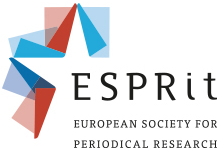Call for Papers: Mediating American Modernist Literature
Mediating American Modernist Literature:
The case of/ for Big Magazines
1880-1960
Aix-Marseille Université, LERMA (EA 853)
Aix-en-Provence, France, October 5- 7, 2018
This interdisciplinary conference seeks to explore the role played by “Big Magazines” in the production, publication, circulation, and reception of American literature between 1880 and 1960.
The study of modernism’s relations to the press and periodical culture is certainly not new to Modernist Studies. Over the last three decades, sustained interest in the role played by “little magazines” has been instrumental in reorienting the conventional reading of magazines “merely as containers of concrete bits of information” to an approach that considers them as “autonomous objects of study,” comparable with individual books (Latham and Scholes) in the field of modernism.
However, this interest has, so far, been directed mostly towards little magazines, as if these were the only periodicals intersecting with modernist practices. In doing so, it has tended to insulate little magazines as a field separate from other kinds of contemporary periodicals (the lowbrow pulps, the middlebrow slick/smart/mainstream/big periodicals), reducing the latter, at best, to a kind of dim cultural fringe or hinterland of modernism. It is only recently that modernist studies have begun to deal directly with the institutional overlap of literary modernism and middlebrow culture, enriching our understanding of their deep affiliations, by focusing on such middlebrow and smart magazines as Life (in its first form), The Smart Set, Vanity Fair or The New Yorker.
In the wake of such studies, the purpose of this conference is to expand consideration of the connection between American literature and mainstream print culture so as to include “an eclectic range of periodical genres having in common, beyond the necessary qualification of being unapologetically commercial, …a conscious effort to expand their readerships by way of their textual and visual styles rather than their content” (Harris, 6). Mainstream print culture includes a vast array of diverse magazines, united by their ambition to speak to a wide national audience and, often, to forge the cultural, literary and political tastes of the middle class, with periodicals such as Harper’s, Scribner’s, Saturday Evening Post, Atlantic Monthly, Reader’s Digest, Life or Henry Luce’s Time. To this same field of national periodicals one can also relate magazines with a narrower editorial scope, selecting their audience on an ideological (McClure’s) or ethnic (The Crisis) basis, or along gender lines, as with the women-oriented Munsey’s and Ladies’ Home Journal and the more masculine Esquire, a precursor in many ways of the men’s magazines that emerged with and around Playboy in the early 1950s.
We invite papers that explore the interaction between mass-market magazines and modernist literary and aesthetic preoccupations over the time span of eighty years, from the emergence of industrialized journalism and the “fully-fledged magazine” (Scholes) to the rise of television as a most influential medium, and the coincident decline of the magazine as “the major form of repeated cultural experience for people in the United States” (Ohmann, 29). Taking into account transatlantic influences – such as Vu’s influence on Henry Luce’s decision to remodel Life after 1936, or connections between Condé Nast and Lucien Vogel, creator of the French edition of Vogue – we would also like to encourage transatlantic perspectives involving French magazines.
Subjects might include, but are not limited to, the following:
- overlaps, parallels & points of intersection between “little”, “middlebrow”, & “pulp” magazines;
- the influence of magazine work on literary work (form, content, imagination);
- the role of magazines in fostering creative nonfiction stories;
- the role of aesthetic, financial, & commercial preoccupations in shaping editorial policies & contents;
- the links, interactions, & networks among writers, publishers, editors, & agents;
- the construction of “complex literary milieus” (Ohmann);
- the identification of style as a promotional tool;
- the link with the phenomenon of celebrity & the rise of popular celebrity culture;
- the role of interviews and portraits in fashioning authorial personae;
- the role of magazines in creating literary institutionalization & professionalization;
- transatlantic exchanges & influences with French magazines (Vu, Voilà, Match, or Marie Claire).
For more information, and to submit an abstract, follow the link:
